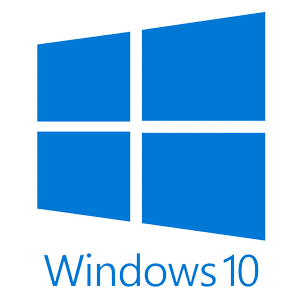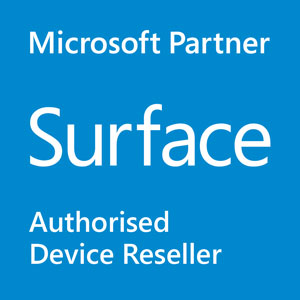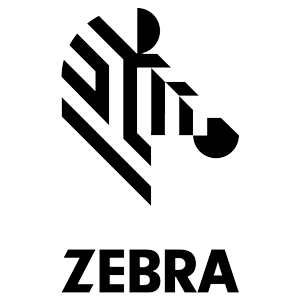There is a lot of anticipation for the release of Windows 7 next month because of the attention that has been given to touch screen support. In particular, people (us included) are excited about that fact that new “Multi-Touch” capabilities are built into windows 7.
Multi-Touch support means that Windows 7 will be able to detect and understand that you have touched the screen in more than one place at a time.
So, what’s the big deal about multi-touch? Well, we’ve seen some pretty cool games like this multi-player air hockey that was displayed by Gizmodo on an HP TouchSmart desktop PC early in the life of Windows 7.
Then there is the potential of finger painting…
iPhone style pinch zoom, rotation and scrolling features are enabled in Windows 7 too. But undoubtedly the real useful applications for multi-touch haven’t been thought of yet.
So before you run out and buy a Tablet PC in anticipation of Multi-Touch, there are some things you should know about touch screen and digitiser technology that you will find in Tablet PCs:
Capacitive Touch Screens
Capacitive touch screens have been on the radar for a while now, most famously on the Apple iPhone. The keys to this technology is that it is very easy to use.
It is able to detect and handle multiple touches at once and you don’t have to press hard either.
Capacitive touch screens use an electrostatic field to determine if contact (e.g. a click) has been made. They rely on the capacitance of your finger to work. So you can’t use your fingernail, a regular stylus, the back of a pen or a chopstick to make it work.
Advantages of capacitive touch screens:
- Supports true “Multi-Touch”
- Very sensitive – requires a very light touch
- Tracks very well for scrolling and panning (like in web browsing).
Disadvantages of capacitive touch screens:
- Generally can’t be used with gloves
- Can’t be used with a stylus
- Light touch makes accidental contact easy
- Overlay hardware degrades screen viewing
- Not pressure sensitive.
Capacitive touch screens are perfect for slate style web browsing, e-reading and games.
Early adopters of capacitive touch on the Tablet PC front were the Motion LE1700 multi-touch (Multi-touch version discontinued), the HP TouchSmart Tx2 and the Dell Latitude XT and XT2.
The biggest maker of active digitizer Wacom has now released a combination capacitive touch screen and active digitizer combination. On the back of that, Fujitsu has announced that several future versions of its Tablet PCs will include these capacitive multi-touch screens.
An upcoming version of the Lenovo X200T will include the Wacom capacitive multi-touch screen. Buyers beware that although the current X200T is labelled multi-touch, it is not multi-touch in the true sense. Lenovo’s confusing multi-touch label refers to the fact that some of its tablets have both an active digitiser and a resistive (singe touch) touch screen.
Go here for a list of Tablet PCs that include capacitive touch screens:
Resistive Touch Screens
Resistive touch screens have been in the mainstream for much longer than capacitive touch screen. Most current PDAs, UMPCs and touch screen phones used resistive touch screens, usually combined with a stylus.
Advantages of resistive touch screens:
- Relatively inexpensive (compared to active digitizers)
- Works with stylus or gloves
- Reliable and durable
- Good for basic data collection and basic input
- Ideal for touch specific applications like Point of Sale (POS).
Disadvantages of resistive touch screens:
- Does not support multi-touch features (There is some evidence that it may be possible, but it is not likely to be as smooth or useful as on a capacitive interface)
- Overlay hardware degrades screen viewing
- Requires harder contact to make it work – increases the chance of missed input
- Generally not great for scrolling smoothly
- Not pressure sensitive.
Resistive touch screens are perfectly suited to commercial applications that are designed specifically for touch input.
A good example of this is Point of Sale (i.e. big clear buttons). In many cases, resistive touch screens are used in conjunction with a stylus as cheaper alternatives to active digitisers.
Active Digitizers
Active digitizers have been around for years in the form of drafting and graphics tablets. Active digitizers are faster, more accurate and much more responsive than touch screens.
The Microsoft Windows based Tablet PC was born from the combination of an Wacom active digitizers and LCD screens. They are able to handle finely controlled input making them ideal for running windows. They are also pressure sensitive which adds significantly to the input experience.
Advantages of active digitizers:
- Fast, accurate and responsive
- Minimal reduction in screen viewing
- Ideal for fine input applications like handwriting and sketching.
- Offers fine pressure sensitivity (and sometimes tilt-sensitivity).
Disadvantages of active digitizers:
- Requires a specific and relatively expensive pen (usually from AU$50 – AU$100)
- Hardware is still expensive
- In many situations, having to hunt down a pen is less convenient and slower than poking with your finger.
Active digitisers are perfect for handwriting input, sketching, digital design and generally working with Microsoft Windows (of all versions).
Summary
 Touch screens of all types are convenient but do not work well for handwriting or fine input applications (like running Windows). An active digitiser is far more useful for general Windows use.
Touch screens of all types are convenient but do not work well for handwriting or fine input applications (like running Windows). An active digitiser is far more useful for general Windows use.
Fortunately there is a host of new touch screen Tablet PCs on the way that include both a pressure sensitive active digitizer and capacitive touch. This is by far the best option for a Windows based Tablet PC. You get the convenience and coolness of multi-touch and the accuracy and performance of the active digitiser pen – the best of both worlds.
Ultimately there is an important place for each of these input technologies. Talk to the experts first and be sure that you are choosing the right one.









Hi , all tablet pc specialists ,
I am a tablet pc lover specially the Fujitsu brand and I would like to buy the multi touch T4410 w/ win.7 once released next month , But I am so confused …..
I am a Pharmacist using a pharmacy management software to manage my pharmacy (P.O.S , inventory , financial , CRM, etc) , running on Win.XP platform . BUT now I am NOT SURE if I will be able to use this software IN the Tablet Mode Exactly as in the notebook mode !!!
For me, this is a critical issue cos I am a mobile warrior and I will use this software in the Tablet mode 90% of the time while standing and walking… now the definite question is : Will the “Input Panel” be available & working inside ANY application running under windows ?? OR it is LIMITED only for certain applicatins like MS Office ?? And this feature is available only in softwares developped for Tablet pcs ??
My software has many screens in which I make queries by writing. for example , a “drug name” or a date or choosing an item from a drop down list . I do that using the mouse & keyboard in my desktop pc … Can I Do These Jobs w/ The Stylus and / or My finger in the Tablet mode ??
Thanks to the global economic crisis , my software vendor seems to be pemanetaly out of service so I have to support myself w/ my own . But I couldn’t find any tablet to try on… And many hardware vendors couldn’t ensure that issue or even let me try on a Demo unit.
Now , I can’t imagine to pay 2500 dollar or more in a hardware that I am not sure it will do the job the way & style I like it ? actually I will buy it for use in the walking mode.
So, I need ur Kind assitance in that issue and as I believe : one picture is better than thousand of words
Thank you
Hi Sherry,
The input panel works in any application.
Pretty much anything that you can do with your keyboard, you can do with the input panel, either in handwriting recognition mode, or on screen keyboard mode. It is very easy to use in any program. Hope that helps.
We do offer demonstrations to customers in Australia, however you appear to be in the US. It’s dissapointing that the hardware vendors don’t know this stuff… In the US, take a look at the Motion Computing or TabletKiosk tablets and get in touch with them. They should be able to help.
– Brett
Sorry, I couldn’t attach a snap shot for a window inside my software ..
Thank you, Brett
Truly appreciate your reply and so grateful for your assurance about that issue
Unfortunately, I am in the middle east (Egypt) where hardware choices and pre sale services are limited & unsatisfied but I think Fujitsu or Dell tablets will do the job smartly.
Thanks to this valuable blog and again thank you.
sherry